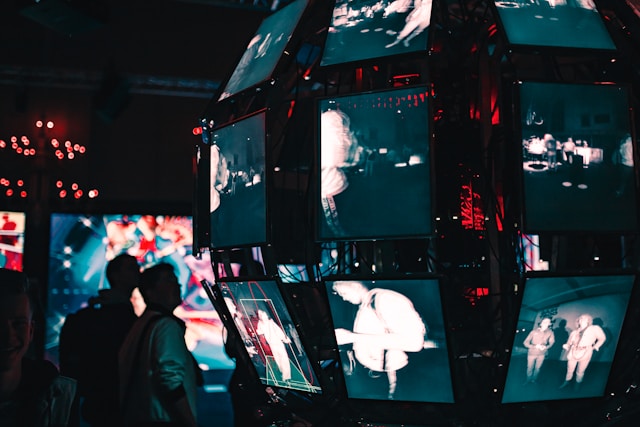Artificial intelligence has rapidly become a cornerstone of modern technology, and one of its most controversial uses is in surveillance. From facial recognition in airports to predictive policing in cities, artificial intelligence in surveillance is transforming how societies monitor safety and security. But as these systems become more powerful, questions arise about where we should draw the line between protecting communities and safeguarding personal freedoms.
This article explores the rise of AI surveillance technology, its benefits, the privacy concerns it raises, and the ethical dilemmas that demand urgent attention.
The Rise of AI Surveillance
AI and surveillance are increasingly intertwined in today’s world. Governments, corporations, and even individuals are adopting artificial intelligence to watch, analyze, and predict behavior.
Common examples include:
-
Facial recognition AI used in airports, schools, and public spaces.
-
Smart cameras capable of detecting suspicious behavior.
-
Predictive policing algorithms that anticipate where crimes may occur.
-
Corporate monitoring systems tracking employee performance and customer movements.
These technologies promise greater security and efficiency, but they also introduce risks of misuse and overreach.
Benefits of AI in Surveillance
There’s no denying that AI surveillance technology offers significant benefits. By automating monitoring, it can analyze vast amounts of data faster than humans, improving response times in emergencies and enhancing security operations.
Some advantages include:
-
Public safety – Detecting threats in large gatherings, airports, or sporting events.
-
Crime prevention – Predictive analytics can help police allocate resources more effectively.
-
Efficiency – AI reduces the need for constant human monitoring.
-
Smart city integration – Surveillance systems help manage traffic, crowd control, and urban safety.
In the right hands, these tools can save lives and reduce crime. But the same systems can also threaten civil liberties if left unchecked.
The Privacy Concerns
Perhaps the most pressing issue with artificial intelligence in surveillance is privacy. These systems collect and store massive amounts of personal data, often without individuals’ knowledge or consent.
Key concerns include:
-
Mass surveillance – Continuous monitoring of public spaces creates a sense of being watched at all times.
-
Data misuse – Personal information could be sold, leaked, or used for manipulative purposes.
-
Government overreach – In authoritarian regimes, AI surveillance has been used to track citizens, suppress dissent, and control populations.
-
Lack of transparency – People often don’t know how their data is collected, stored, or used.
This raises the fundamental question: is safety worth sacrificing privacy?
The Ethical Dilemma
AI and surveillance sit at the center of a profound ethical debate. On one hand, enhanced security can save lives. On the other, unchecked monitoring risks eroding individual freedoms and creating a culture of constant observation.
Some critical issues include:
-
Security vs privacy – Striking the right balance is complex and contentious.
-
AI bias and discrimination – Facial recognition AI has been criticized for inaccuracies, particularly in identifying women and people of color, leading to wrongful arrests and unfair targeting.
-
Accountability – Who is responsible when AI systems make mistakes or violate rights: the developers, the operators, or the governments using them?
The ethical challenges show that technology alone cannot dictate the future it requires human judgment, laws, and oversight.
Where Should the Line Be Drawn?
Determining the boundaries of ethical AI surveillance requires collaboration between governments, tech companies, and civil society. Clear laws and guidelines must define how far surveillance can go while respecting human rights.
Important steps include:
-
Strong data protection laws – Frameworks like the EU’s GDPR and the upcoming AI Act provide a starting point.
-
Transparency and accountability – Organizations must disclose how surveillance AI is used and audited.
-
Consent and choice – Individuals should have a say in how their data is collected and applied.
-
Independent oversight – External regulators are necessary to ensure ethical practices.
Ultimately, drawing the line means ensuring that security does not come at the cost of fundamental freedoms.
The Future of AI and Surveillance
Looking ahead, AI surveillance technology is likely to expand further, but so will debates around its regulation. Hybrid systems may emerge, balancing safety with privacy by using anonymized data or decentralized storage. Global standards for ethical AI could also play a key role in ensuring fair and transparent use.
As societies continue to adopt smart cities and advanced monitoring, one thing is clear: the future of AI and surveillance will depend on how responsibly we manage this powerful technology.
Conclusion
AI and surveillance have the potential to reshape how we live, work, and interact in public spaces. They offer enhanced safety and efficiency but also raise serious concerns about privacy, ethics, and human rights. The evolution of AI surveillance technology challenges us to ask: what’s the line, and who gets to draw it?
Balancing innovation with accountability is essential. By setting clear ethical boundaries, enforcing regulations, and prioritizing transparency, we can harness the benefits of AI while protecting the freedoms that define open societies.

